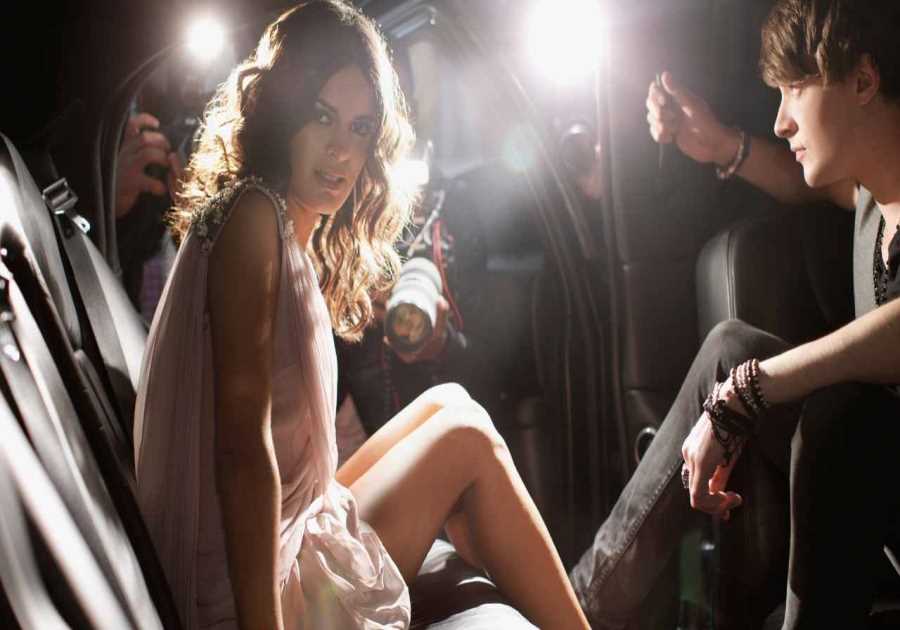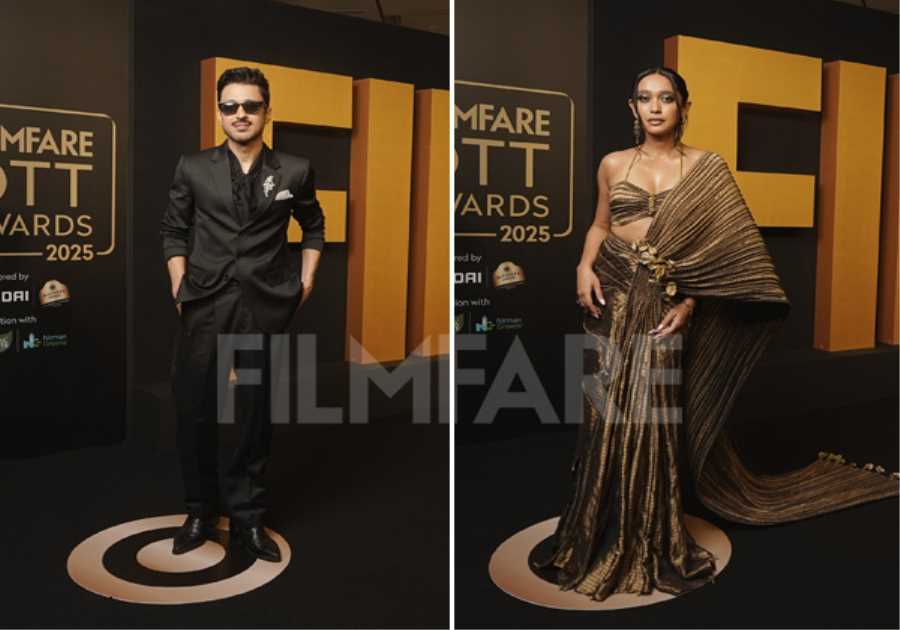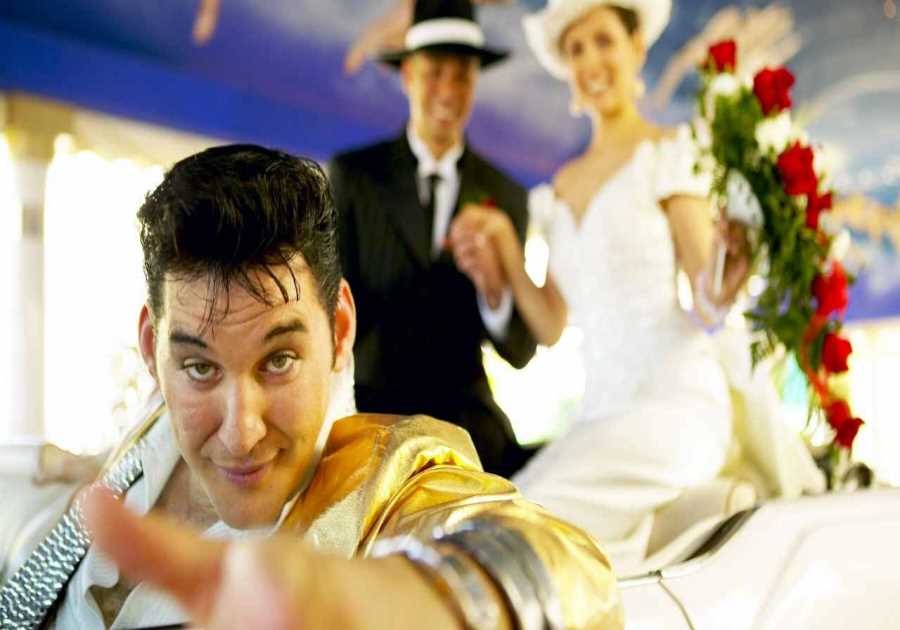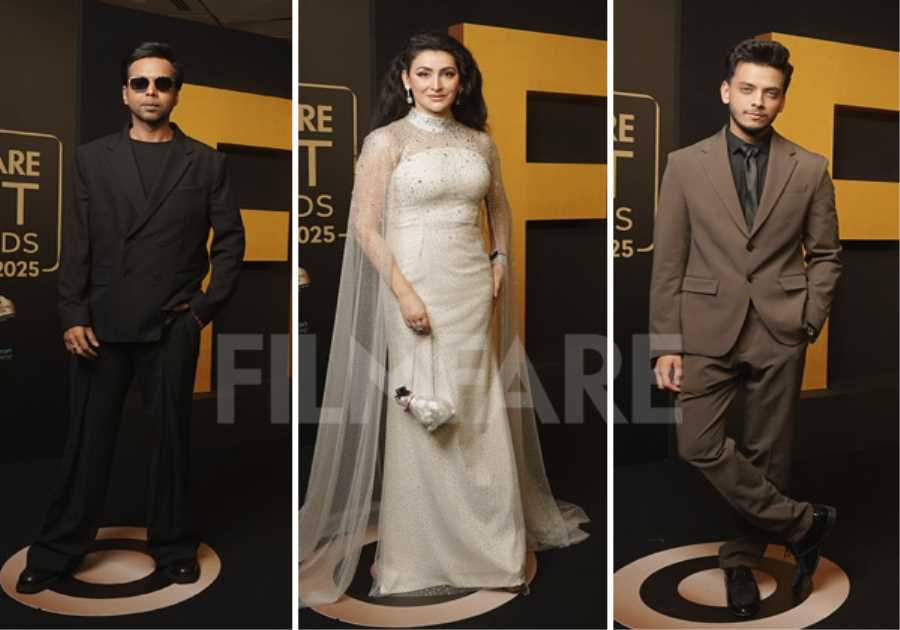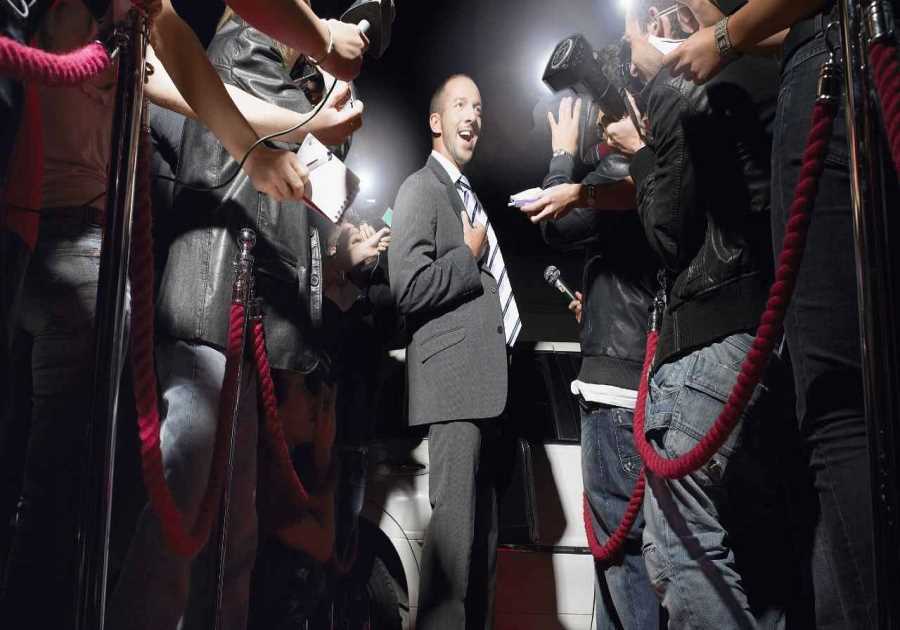Like a lot of commercial Indian cinema, S.S. Rajamouli’s “RRR” has a lot going on. It’s a stunning action spectacle, a historical epic, and a buddy movie. Sometimes, it’s a musical. Unlike a lot of commercial Indian cinema, however, it’s also a crossover hit in America. The movie grossed $170 million worldwide, which included a theatrical rerelease dubbed “EncoRRRE” and a successful life on Netflix that kept it in the top 10 for 14 weeks straight. The movie focuses on a tribal guardian (N.T. Rama Rao Jr.) assigned to rescue a kidnapped girl from colonial authorities, only to befriend an Indian soldier (Ram Charan) working for the other side. That conflict sets in motion a three-hour opus that has turned Rajamouli — previously only known to fans of Telugu cinema — into a revered filmmaker worldwide, and the centerpiece of an unlikely awards campaign.
Earlier this month, “RRR” was snubbed by India when the film was not selected as its Oscar submission, but Rajamouli’s campaign is now angling for Best Picture. The filmmaker spoke to IndieWire at the Toronto International Film Festival ahead of participating in a public conversation about the movie there and attended a tastemaker screening in New York shortly afterward. On Friday, the “RRR” campaign kicks into high gear with an IMAX screening at the TCL Chinese Theatre with Rajamouli in attendance.
At TIFF, Rajamouli talked to IndieWire about the underlying themes of the movie, the challenges involved in getting it finished during COVID, and where he sees his filmmaking career going next.
The following interview has been edited and condensed for clarity.
IndieWire: What has surprised you about the success of “RRR” in America?
S.S. Rajamouli: We can all agree that, basically, a good story is a good story across the world. If it works in one part of the world, it should work in the other. But the way the audience perceives it depends on the sensibilities of the culture and the people. So I always believe that my sensibilities are Indian and maybe I can cater a little bit more to the East.
When “RRR” came out and the reception started going around, it grew and grew even more. Obviously, I’m happy about it. I can’t pinpoint why it happened, but I would say a part of it is that Western audiences are not getting the full-blown action of Masala movies. Maybe Hollywood movies aren’t giving them enough of that. That’s what I gather when I look at the response. In any case, that really, really surprised me, and I’m really, really happy about it.
The scale of the movie is just massive. How did you map out the sheer ambition of these action scenes?
I always like to push the boundaries. You can create a fantastic spectacle if the characters have supernatural powers. That’s great to see onscreen, but for me, once the character has those powers, if the audience believes he can do anything, then there is no creative tension. I would like to make my characters real but the action over the top. To bridge that gap, I need to push the emotional drive of the characters. It has been proven that when a person is emotionally driven, he can do things that are beyond belief. We have heard so many stories about people doing unimaginable things when they need to. That’s what gives me the confidence to create really big action sequences that you know aren’t possible but believe the characters can go through them.
There are so many special effects throughout the movie. Some people would be afraid to go to such extremes, but you embrace them, from the opening bridge sequence to the CGI tiger fight and beyond.
It’s just another tool. It’s a powerful tool, but another tool. The onus is on the sequence that is created. When you create the sequence, immediately as a filmmaker, you have to think about how to create this particular visual. If it needs visual effects, we use them; I don’t think in terms of how I can do something with visual effects. Obviously, I don’t avoid it either. It’s a very strong tool and I make the most use of it I can. I try to go for the technicians who are really good at understanding my thought process and their ability to do visual effects. The key is to get the technicians to understand it. They’re all Indians, I’ve worked with them for a long time, and they understand my process.

S.S. Rajamouli
Getty Images
How big was your crew?
I lost count. [laughs] It was around 600 or 700 hundred. When we were doing the scene with all the animals coming out of the truck, there were so many actors and other people standing around. It was night shoot. The light goes out at 6 o’clock and we had to start shooting from there. We had to dress up all the actors in different costumes starting at 10 or 11 in the morning to get them ready. When I entered onto the set and saw all these people getting into their positions, it was intimidating. Every minute is like you’re burning money. It’s worth every penny of it. I love the challenge.
It must have been quite an ordeal to finish this during the pandemic.
Getting through the COVID era was tough. We were shut down for one and a half years. We had spent so much on the film. We had shot almost 50 percent of the film. We first shut down for 10 months and the second time was for fourth months. Then the release was postponed. Just maintaining a high spirit during those times was the biggest challenge. Life is always strange. In terms of COVID, I would say that we were really worried about what was going to happen to humanity as a whole. At the same time, on a smaller scale, I was wondering if I could ever go back to sets and shoot a film here. I didn’t know. Just getting back to normal life itself is a great feeling. It feels like gratitude more than anything else.
How much was the film inspired by the Indian epics Ramayana and Mahabharata?
You read so many stories and connect so many of them. Knowingly, I didn’t take it from anything from particular, but the friendship in the Ramayana is legendary. I’ve thought about it so many times. Unknowingly, those things play some kind of role.
The movie deals with evils of colonialism in very explicit terms. Why was it important for you to center the movie around this historical period?
It’s not actually history. It’s historical fiction. The characters are real but the events of the film didn’t happen. I like the Indian way of storytelling because most of the stories have a lot of action, and the action is back by emotion. There is a reason for the action to happen that matters for the characters who are a part of it. I always prefer to find a story that can do that. In “RRR” I found that by setting in times that were hard, so the characters were facing struggles that came from the tensions of the time itself. I thought that bringing those two characters together could create a very meaningful reason for the action.
How much did the specter of colonialism impact you as a filmmaker overall?
Two things on this. One is historical accuracy. The other is creative freedom. It’s a fictional story, not reality. You can’t confuse that with history. Having said said, if you take the 90-odd years that India was under British rule, and maybe another 200 years when it was under East India Company rule, there are many, many atrocities that have been committed on the Indian people. That doesn’t mean every British person is a villain.
There was an English officer named Charles Philip Brown who collected the Telugu language for a dictionary in the early 20th century. Because of his dictionary, the language survived. We are indebted. There was a British engineer, Sir Arthur Cotton, who built the Dowleswaram Barrage. Because of the Barrage, the people in several districts have prospered for decades now. But at the same time, again, there are many, many atrocities.
And you have that extraordinary shot of blood spattered across the words “The sun never sets on the British empire.”
At any given point in time, there was sun shining on the British empire. Just imagine the British empire being that big and so strong. The Freedom Fighters were so small by comparison. But it’s the spirit of those Freedom Fighters who fought and fought that allowed them to achieve what they wanted to achieve by sacrifice. That was what I was thinking about.
What sort of movies inspired you to be a filmmaker?
I watched a lot of Indian films as well as Western films. For me there are a couple of Indian films who made quite an impact on me as a child. I didn’t plan to be a director at that time. But the drama, the character relations really made an impact on me. Later on, once I started watching English-language films, Mel Gibson’s “Braveheart” inspired me a lot. His style of filmmaking really impressed me — the way he drives the audience into the action is masterful, the way he stretches out the time in particular.
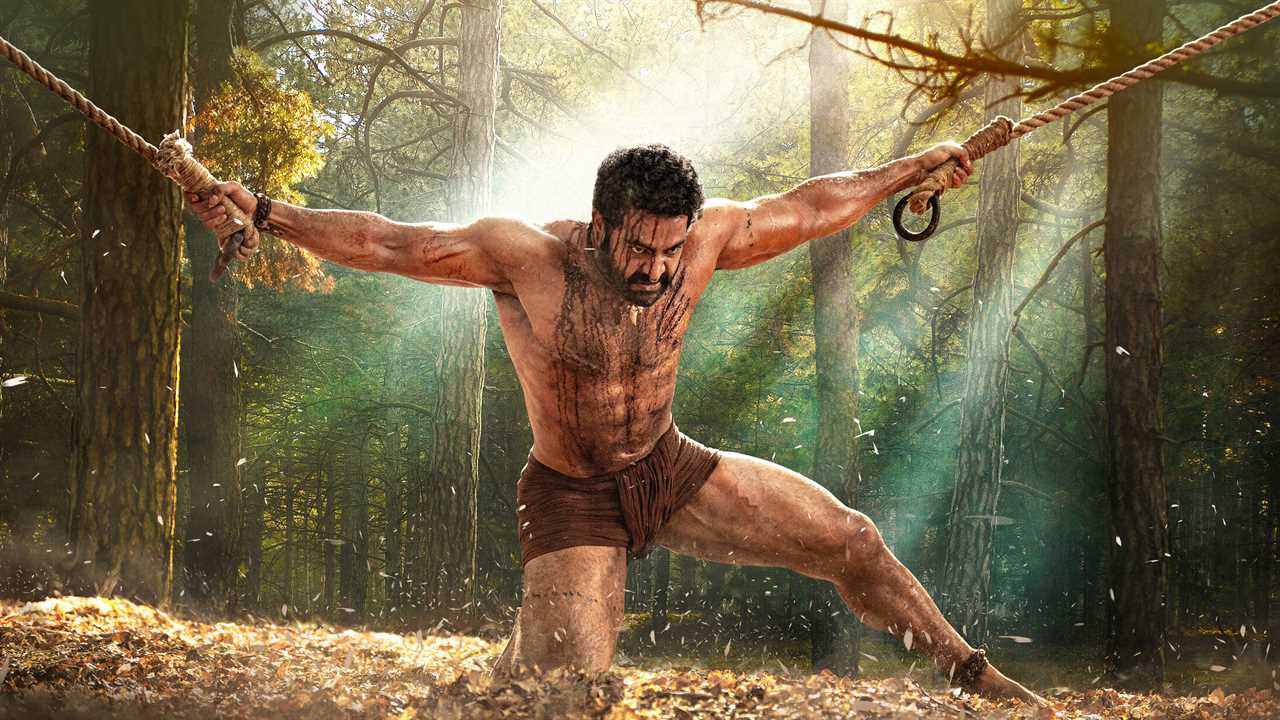
“RRR”
Commercial Indian cinema often catches Western audiences off-guard — the way that different genres blur together on a large scale is just not something you often see anywhere else. When did you become aware of how much that aspect of Bollywood movies differentiated them from other countries?
Even before I started making films, I noticed a specific distinction not just with the songs but with the way the story is narrated and the way the characters behave. I felt that Western cinema had a different framework in which they placed the characters and scenes played out. In Indian films — not always — the framework was much looser. Because it is too loose, I thought that the point is not always driven home the way it should be. That was a general observation I had. But later on, as I started focusing on Western framework, it became the reverse — I thought that was too restrictive. You can’t experiment as much.
Whereas Indian films, as they started fine-tuning their storytelling, they had a better scope. There are some things that I really learned from Western cinema, though. Creating a realistic situation not just with the actors so that it enhances the emotions. When people talk about Indian cinema, they usually talk about the songs. There are many kinds of songs in Indian cinema, but there is a grammar for them. They have to be used properly.
How obligated are you to include dance in your films?
There is no obligation. When you start making a film, you select a storyline and a star cast. You understand what people are going to expect from this film. Let’s say Steven Spielberg is doing a movie with Kristen Stewart. Immediately audiences will have an expectation of what that’s going to be. If you reach that expectation, you will have a successful film. If you go beyond that expectation, then you’re going to have a blockbuster. If you don’t reach that expectation, you’re going to have a flat film. When I have a basic storytelling and the people who are going to act in the film, I also know that the audiences will expect songs. We have to make the most of it.
The U.S. life of “RRR” has been two-pronged — people are finding it both in theaters and on Netflix. This is a bit of a loaded question, but what’s your preference for the way people see the movie?
Obviously the theater. I’m a filmmaker who makes films for the cinema. When you watch a film in a theater full of people, it’s the kind of synergy where a small smile can become a laughter. All the emotions you feel are enhanced. But I also understand the power of streaming that has allowed my film to reach people all over the world.
The Netflix version is a Hindi dub. Does that bother you?
No, because I directed it. I checked each and every line to make sure that the essence of the language is coming through. I checked it so many times. We spent so much time getting it right. Of course having it come out in my own language would have been nice, but that doesn’t take anything away from the dub.
With “RRR” gaining traction beyond India, do you have any interest in working on a Hollywood production?
As a storyteller, I always want the biggest audience. At the same time, I don’t know how Hollywood works, how people here make films. I have been making films for the past 25 years in a certain way. But I’m quite curious to know how each part of the film is made. If there is something I could learn from that, I would. Keeping that in mind, I really would like to work on a Hollywood production just to learn the nuances of filmmaking there. Let’s see how it goes.
You’re exploring that now?
Yes, I am, but presently I am writing a film in Telugu.
Plenty of people are clamoring for an “RRR” sequel.
I would love to. I need to have a story first. I’ve discussed a few possible ideas that didn’t go very far. But if something interesting comes up, there’s no stopping it.
-----------------------
By: Eric Kohn
Title: ‘RRR’ Director Says Western Audiences Are Starved of Good Action Movies
Sourced From: www.indiewire.com/2022/09/rrr-interview-ss-rajamouli-1234768479/
Published Date: Fri, 30 Sep 2022 18:15:00 +0000

